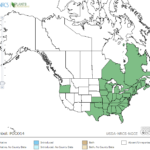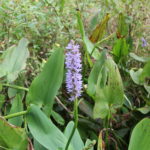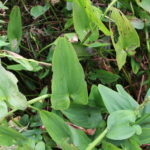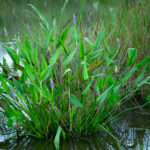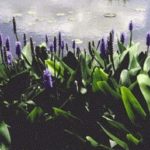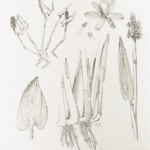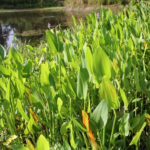Pontederia cordata
USDA, NRCS. 2018. The PLANTS Database (http://plants.usda.gov, 28 March 2018). National Plant Data Team, Greensboro, NC 27401-4901 USA.
Illustration courtesy of University of Florida/IFAS Center for Aquatic and Invasive Plants. Used with permission.
What is Pickerelweed?
Physical Characteristics
Leaves:
- Straight
- Range from triangular/egg-shaped to triangular/sword-shaped
- Deeply heart-shaped or cut off
- Rarely thin at base
- Up to 0.75 inches long
Flowers:
- Spike up to 6 inches long
- Straight spike
- Short life cycle
- Petals violet-blue in color
- Anther elliptical-shaped, blue in color
Outer Part of Flower:
- Funnel-shaped
- 2-lipped
Fruit:
- One seeded
- Thin
- Bladder-like
Stem:
- Up to 3 feet tall
- Thick, creeping rhizomes
Roots:
- Rooted in mud
Where Does it Grow?
Pickerelweed can be found in marshes, sluggish streams, and ditches in shallow water.
Pros and Cons of Pickerel-weed
Ducks will consume the seeds of pickerelweed; while muskrats and nutria will consume the rhizomes and base. Submerged portions of all aquatic plants provide habitats for many micro and macro invertebrates. These invertebrates in turn are used as food by fish and other wildlife species (e.g. amphibians, reptiles, ducks, etc). After aquatic plants die, their decomposition by bacteria and fungi provides food (called “detritus”) for many aquatic invertebrates.
